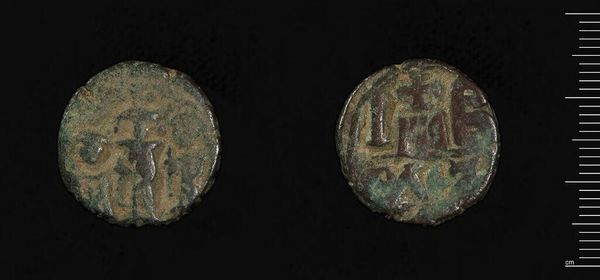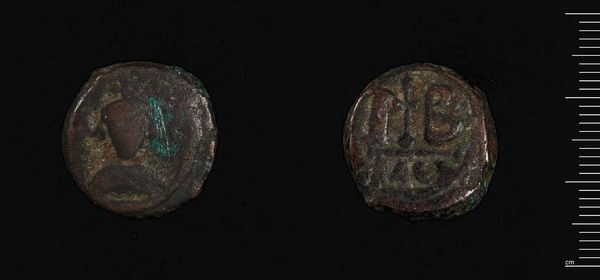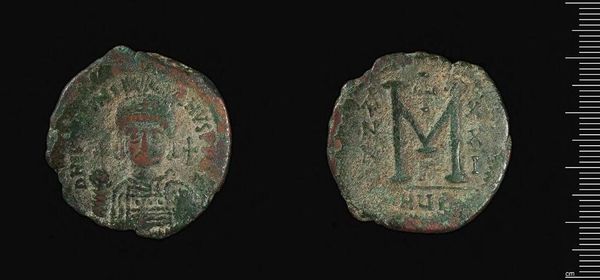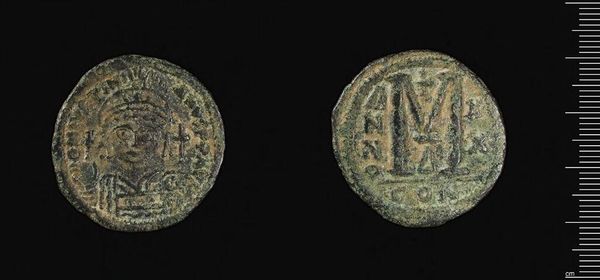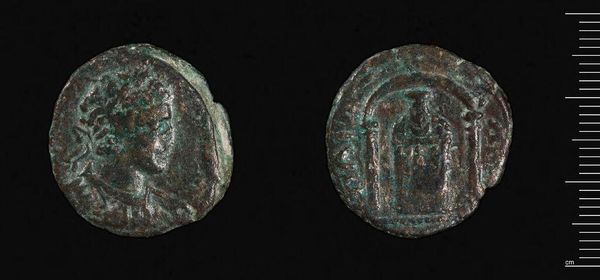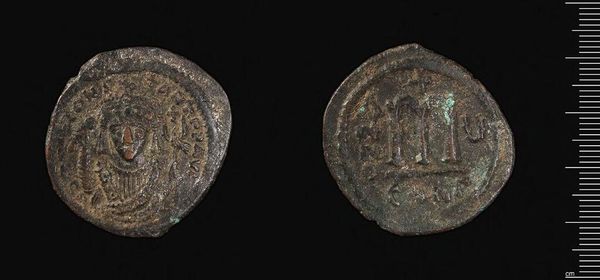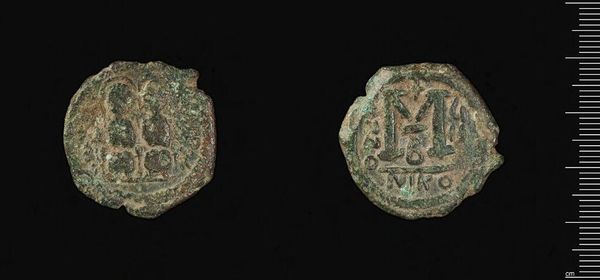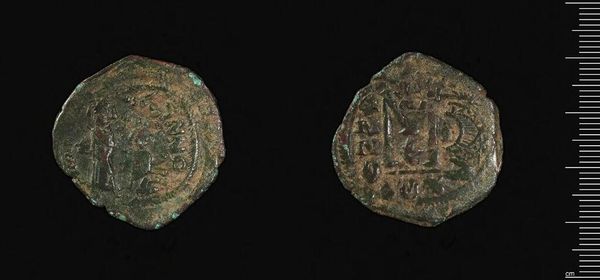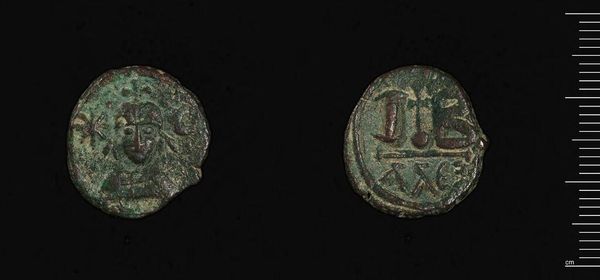
Dimensions: 9.84 g
Copyright: CC0 1.0
Editor: Here we have a coin of Phokas, weighing 9.84 grams, over at the Harvard Art Museums. It looks pretty worn, but you can still see figures. What do you see in this piece, from a materialist perspective? Curator: It's fascinating to consider this coin not just for its imagery, but as a product of labor and material extraction. Where did the metal come from? Who mined it, refined it, and then physically struck these coins? This small object represents a complex network of production and consumption. Editor: So, you're less focused on who Phokas was and more on the people who made the coin that bears his image? Curator: Precisely. The value isn't inherent but assigned, based on material scarcity, labor investment, and the authority it represents. Considering the coin as a commodity reveals the economic structures of the time. Editor: That’s an interesting way to think about it. I never considered all the hands involved. Curator: Indeed. It grounds the narrative in the realities of the people who made the empire function.
Comments
No comments
Be the first to comment and join the conversation on the ultimate creative platform.
